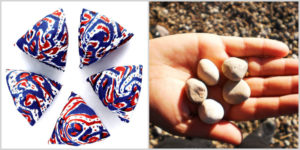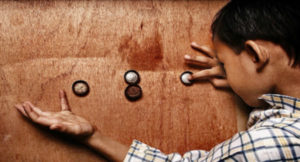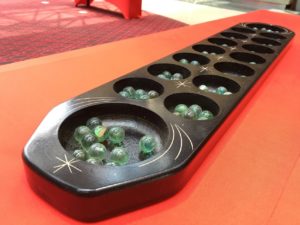As we all remain at home during this CMCO, we are understandably restless, and looking for things to entertain ourselves with. This week on Jom Belajar, we check out some traditional Malaysian games that are commonly played at home.
 1. Batu Seremban (Five Stones)
1. Batu Seremban (Five Stones)
Batu Seremban is a traditional Malaysian game played on playgrounds and at home. The game can be played by individuals or with a group of friends. Batu Seremban is similar to the game of jacks, where an object is tossed into the air, items are gathered on the ground, and the tossed item is caught. Unlike jacks, there is no ball, and traditionally players use 5 small stones. In Malaysia, little cloth sacks, which contain seeds or beans, are often used in place of the stones. The most popular shape for the cloth stones are little pyramids. Click here to see the rules of the game and find out how to make your own Batu Seremban here.
2. Ceper (Bottle Caps)
 Now for the second part. Spin the cepers and make sure they do not overlap. Take a ceper. Another player will choose which ceper to shoot at – this requires concentration, focus and skills. If successful, the player will lob the ceper to get points. You can see how the game is played here. The next time you open any bottle with a steel bottle cap, don’t throw away the cap! Ceper is a traditional Malaysian game that originated from the late 1970s. All you need to play are two people and five steel bottle caps. First, determine who starts first. Put all five bottle caps on your palm. Throw them up into the air and try to catch as many as you can using the back of your palm and then lob again to catch). One ceper represents two marks. Those who get the most number of caps have the advantage to start.
Now for the second part. Spin the cepers and make sure they do not overlap. Take a ceper. Another player will choose which ceper to shoot at – this requires concentration, focus and skills. If successful, the player will lob the ceper to get points. You can see how the game is played here. The next time you open any bottle with a steel bottle cap, don’t throw away the cap! Ceper is a traditional Malaysian game that originated from the late 1970s. All you need to play are two people and five steel bottle caps. First, determine who starts first. Put all five bottle caps on your palm. Throw them up into the air and try to catch as many as you can using the back of your palm and then lob again to catch). One ceper represents two marks. Those who get the most number of caps have the advantage to start.
3. Congkak
 Congkak is a popular game of logic played throughout Asia, Africa and the Americas, with many adaptations. Known elsewhere as mancala, the version commonly played in Malaysia requires two players to share a wooden board with one row of seven holes along each side, and one bigger hole at either end. The two rows of seven holes are designated as “houses” while the last two larger holes serve as “storehouses”. Seeds or marbles are placed in each hole, and then redistributed according to the rules of the game. The objective is to gain as many seeds in one’s storehouse as possible. Find out more about congkak here.
Congkak is a popular game of logic played throughout Asia, Africa and the Americas, with many adaptations. Known elsewhere as mancala, the version commonly played in Malaysia requires two players to share a wooden board with one row of seven holes along each side, and one bigger hole at either end. The two rows of seven holes are designated as “houses” while the last two larger holes serve as “storehouses”. Seeds or marbles are placed in each hole, and then redistributed according to the rules of the game. The objective is to gain as many seeds in one’s storehouse as possible. Find out more about congkak here.


